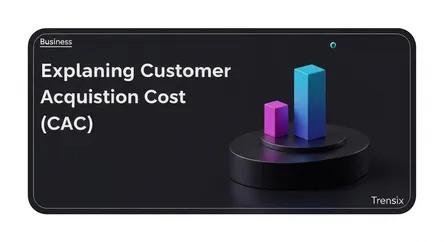Business
Explaining Customer Acquisition Cost (CAC)

Understand Customer Acquisition Cost (CAC), the critical metric for measuring the true cost of gaining a new customer and why it matters for startups.
What is it?
Customer Acquisition Cost (CAC) is a key business metric that represents the total cost associated with acquiring one new customer. To calculate it, you divide all your sales and marketing expenses—including salaries, ad spend, and overhead—by the number of new customers gained during that specific period. For instance, if a startup spends $10,000 on marketing in a month and acquires 100 customers, its CAC is $100. It provides a clear, data-backed view of how much it costs to grow the customer base, making it an essential indicator of a company's financial health and scalability.
Why is it trending?
CAC is trending because the startup ecosystem is more data-driven than ever. Investors scrutinize CAC to determine a company's potential for profitable growth. A low CAC indicates an efficient sales and marketing engine, which is highly attractive for funding. It's almost always analyzed alongside Customer Lifetime Value (LTV). A healthy LTV-to-CAC ratio (ideally 3:1 or higher) signals a sustainable business model. With the rise of digital marketing, tracking the specific costs and results of different channels has become easier, making CAC a go-to metric for optimizing marketing spend and strategy.
How does it affect people?
For founders and investors, CAC directly impacts valuation and funding decisions. A high or rising CAC can signal an unsustainable business model, potentially halting investment. For marketing teams, it's a direct measure of their performance, forcing them to focus on cost-effective channels and strategies to improve ROI. This can lead to more targeted and efficient advertising. For consumers, a company's focus on lowering its CAC might mean less intrusive advertising, but in some cases, it could also mean fewer introductory discounts if those prove too costly for the business.